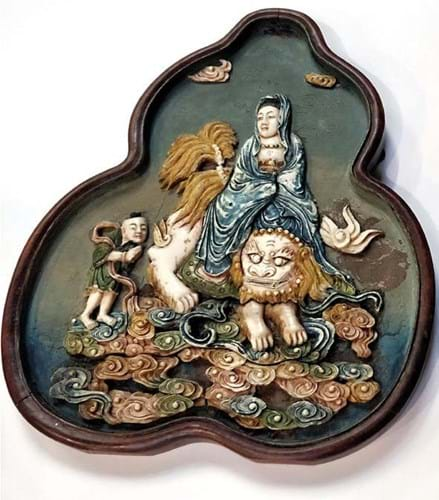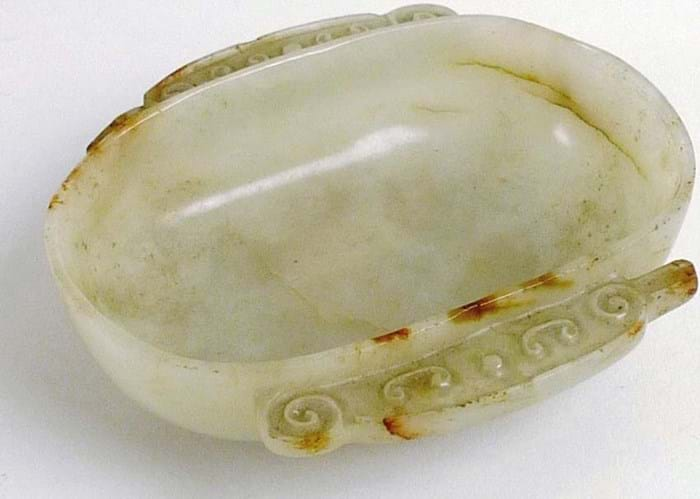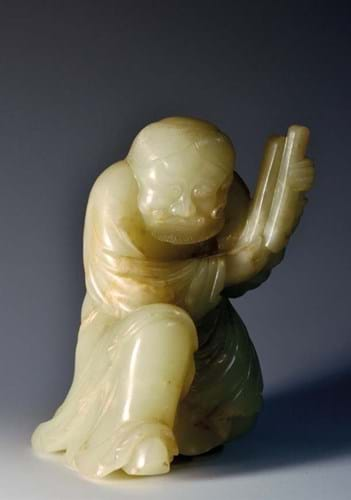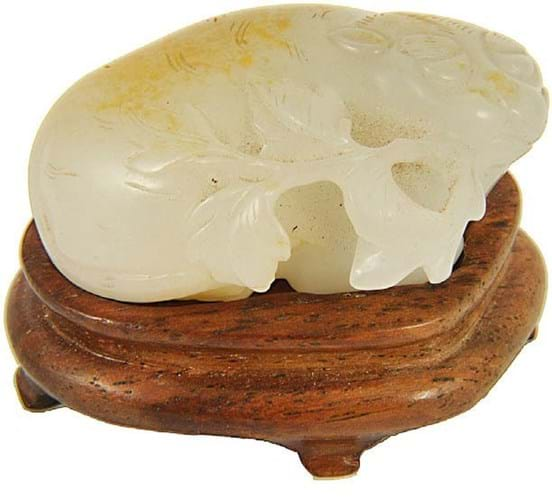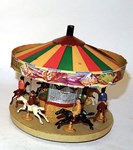Before the crop of sales timed to coincide with Asian Art in London, a number of provincial firms were feeling its benefits.
Serious competition
Factual, full but non-committal descriptions together with an illustration are the way forward for many provincial catalogues.
The subject of serious competition at Tayler & Fletcher (18% buyer’s premium) at Bourton-on-the-Water on October 19 was simply described as ‘a quatrefoil-shaped Chinese porcelain dish, delicately decorated in enamels with flower heads and scrolling foliage etc against a light green ground and six-character seal mark to underside’.
“It was a privately consigned lot but we were unsure about at first,” said auctioneer Henry Forcer Evans explaining the £50-70 estimate.
“Bidders made up their minds that it was a Daoguang mark and period imperial piece and it sold at £20,500 to a phone bidder based in London.”
Much of the bidding for Chinese works comes online, and long-established Somerset auction house Cooper & Tanner (16% buyer’s premium) entered the new world by holding its first sale using thesaleroom.com at Standerwick on October 18.
The first lot up more than justified the move. This simply catalogued pair of early 20th century polychrome ivory or bone plaques carved in relief with a female riding a lion, each in a 12in (30cm) hardwood frame, was estimated at £30-50 but went back to China at £7000.
At Colwyn Bay on October 31, Rogers Jones (17.5% buyer’s premium) was considerably more confident about the value of 55 pieces of early to mid 19th century Cantonese famille rose dinnerware, each piece profusely decorated with mythical figures, warrior, musicians, tigers, flowers and scrolls.
They came with a lengthy provenance back to a wealthy Devon family in the early 19th century. Most pieces had wear but there were no major repairs and, against a solid £3000-5000 estimate, the service sold at £7000.
At the wide-ranging sale at Bearnes Hampton & Littlewood (21% buyer’s premium) at Exeter on October 3 China was best represented by a set of three late 19th-early 20th century silkwork panels.
Each 2ft 11in x 10¼in (89 x 26cm) panel, contained in mother-of-pearl frames, depicted exotic birds among flowering shrubs and bamboo. Pitched at £200-300, the trio sold to a UK-based Chinese bidder at £4900.
Jade challenge
Cataloguing handling jades is among the most challenging tasks for a generalist. Age, quality, colour, subject matter and symbolism are all considerations which can be best left to specialist bidders.
A mutton fat jade dish discovered in the village home of a reclusive descendant of a military family who died intestate three years ago brought other problems for Lincolnshire auctioneer Greg Bateman. He used experts from the BBC TV show Heir Hunters to track down next of kin who were finally unearthed living only a few miles away.
Research of the object itself led to it being offered at Batemans (20% buyer’s premium) at Stamford on October 6 as an unmarked 4in (10cm) long 18th century dish with two handles, carved with scrolls. Estimated at £1000-1500, it sold to a London dealer at £11,000 who said that the form was extremely rare and more often seen in lacquer.
A more familiar figure, a crouching scholar in celadon jade, was given an almost cursory description in the September 27 for Bamfords’ (21% buyer’s premium) sale at Derby with no suggestion as to date. Nevertheless, against a £100-150 estimate it sold at £5000.
At Catherine Southon’s (17.5% buyer’s premium) fifth anniversary sale at Selsdon on November 1, a 2in (5cm) carving of a cat lying with curled tail behind a leafy branch was merely catalogued as ‘antique’.
The stone was a white/grey and russet colour with a natural flaw incorporated into the back paw and hindquarters of the model. Against a £200-300 estimate, but with several phone lines booked, it went overseas at £4000.



